No products in the cart.
NEWS
Boost Your Harvest: Fast-Growing Vegetables Perfect for Intercropping
Maximize every inch of your garden space and enjoy earlier, more abundant harvests by embracing the ancient practice of intercropping, particularly with fast-growing vegetables. As an expert in sustainable gardening and a content creator for Biogarden.asia, I’ve seen firsthand how integrating quick-maturing crops between slower-growing main plants can transform productivity and soil health. Intercropping isn’t just for large farms; it’s a powerful technique easily adapted for the home gardener looking to increase yields without expanding their footprint. By utilizing the space between rows or alongside plants that mature later, you can harvest delicious vegetables in just a few weeks, long before the main crops need the room to stretch out.
Beyond simply increasing the volume of produce, intercropping offers several benefits that contribute to a healthier, more resilient garden ecosystem. These quick crops can function like mini cover crops, helping to retain soil moisture, suppress weeds by shading the ground, and even reduce the impact of wind erosion on exposed soil. Some intercrops, like legumes (though not listed here as fast-growing vegetables), are renowned for their ability to fix nitrogen in the soil, naturally improving fertility. The key is selecting compatible plants that won’t compete aggressively for vital resources like light, water, and nutrients. By carefully choosing your plant pairings, you can create a harmonious garden where every plant contributes to the overall success. Combining intercropping with other space-saving methods like succession planting (planting new crops after old ones are harvested) and vertical gardening can truly make even the smallest plot incredibly productive. These fast-growing intercrops are generally straightforward to cultivate, offering significant rewards for minimal additional effort.
Unlocking the Benefits of Intercropping
Intercropping is more than just stuffing more plants into a bed; it’s a strategic approach that enhances garden vitality. The primary advantage, of course, is maximizing yield from a limited area. But the ecological benefits are equally compelling. Having continuous plant cover helps protect the soil structure from heavy rain and harsh sun, fostering a more stable and active soil microbiome. This can lead to improved nutrient cycling and reduced reliance on external inputs. Furthermore, a diverse planting arrangement can confuse pests, making it harder for them to locate their preferred host plants. As we advocate at Biogarden.asia, fostering biodiversity above and below the ground is fundamental to successful, organic gardening, and intercropping is a fantastic tool for achieving this.
Choosing Your Intercropping Companions Wisely
The success of intercropping hinges on plant compatibility. Avoid pairing heavy feeders with other heavy feeders in close proximity unless you are diligently amending the soil. Consider the growth habits: Tall, vining plants can offer shade to lower-growing, cool-season crops during the heat of the day. Plants with different rooting depths are often good partners, as they access nutrients and water from different soil horizons, minimizing direct competition. Understanding each plant’s needs for sun, water, and nutrients is crucial before planting them together.
Five Fast-Growing Vegetables Perfect for Intercropping
Selecting vegetables with a short maturity period is essential for effective intercropping. These crops will be ready for harvest and removed before the larger, slower-growing plants require the full space to develop. Here are five excellent options known for their speed and adaptability:
1. Radishes
Often underestimated, radishes are champions of speed, typically ready for harvest in just 3-4 weeks from sowing. As a cool-season vegetable, you can often get a spring crop and a fall crop in many climates. Belonging to the Brassica family, radishes are natural companions for their larger cousins like cauliflower, broccoli, and Brussels sprouts. Plant radishes between rows of these brassicas; the radishes will be harvested just as the larger plants begin to fill out the space.
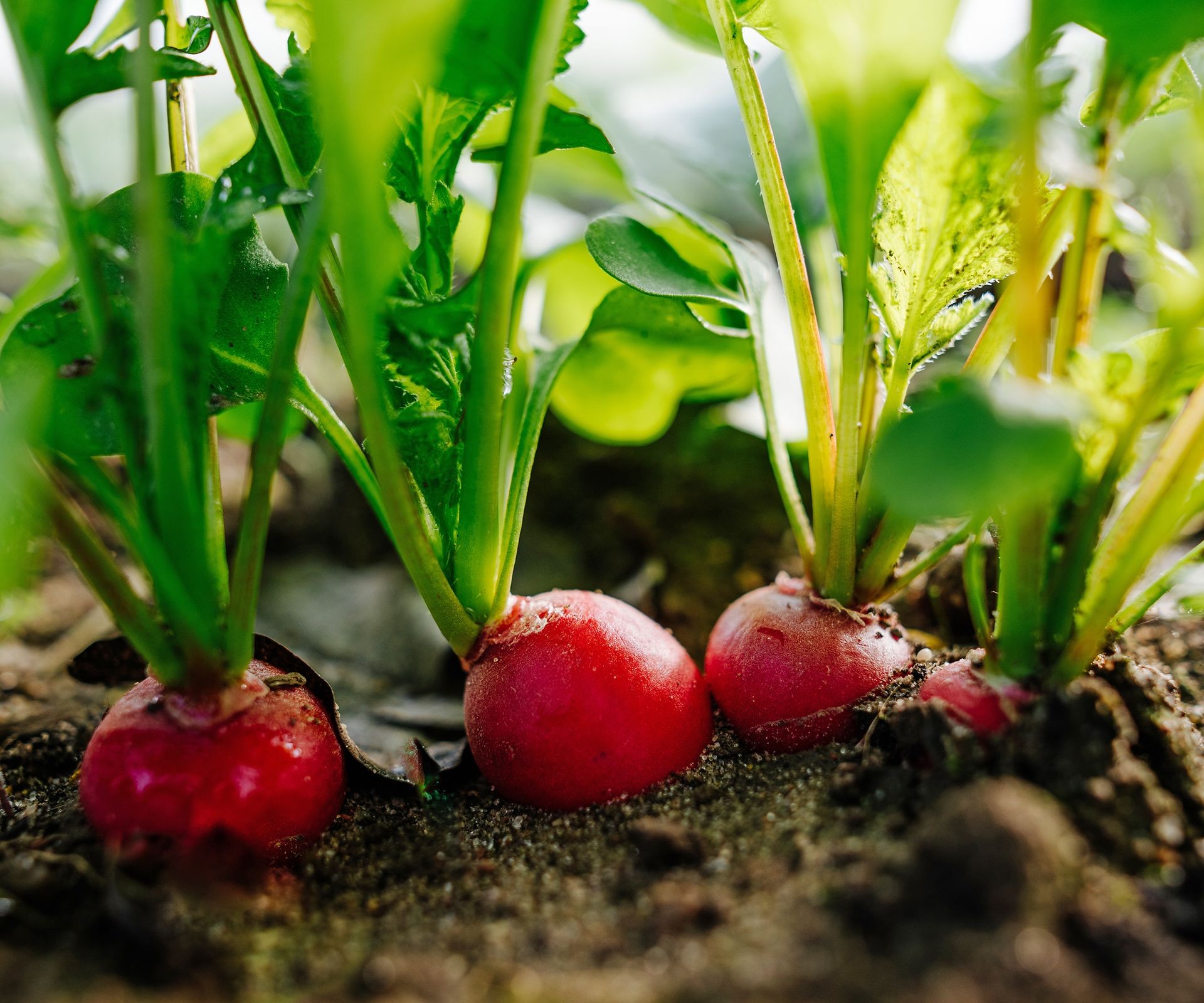 Fast-growing radishes peeking out of the soil, ready for early harvest in an intercropped garden bed.
Fast-growing radishes peeking out of the soil, ready for early harvest in an intercropped garden bed.
Radishes also pair well with slower-growing root vegetables such as parsnips or carrots, or even between potato plants. Growing radishes is quite simple. Direct sow seeds in early spring, about four weeks before your last expected frost. Choose loose, well-draining, fertile soil and a location with full to partial sun. Sow seeds about ½ inch (13mm) deep and ½ inch (13mm) apart initially. Once seedlings develop their first true leaves, thin them to stand about 1 inch (2.5cm) apart to allow roots to form properly.
2. Baby Bok Choy (Pak Choi)
Introduce a touch of the exotic to your intercropping with baby bok choy, a staple in many Asian dishes. This cool-season Brassica can be harvested at various stages, but the young leaves are particularly tender and flavorful. Bok choy is quite versatile regarding sunlight, performing well in full sun but also thriving in partial shade. This makes it an ideal intercrop for larger plants with sprawling leaves that provide natural shade, as the reduced sun exposure won’t hinder bok choy’s growth.
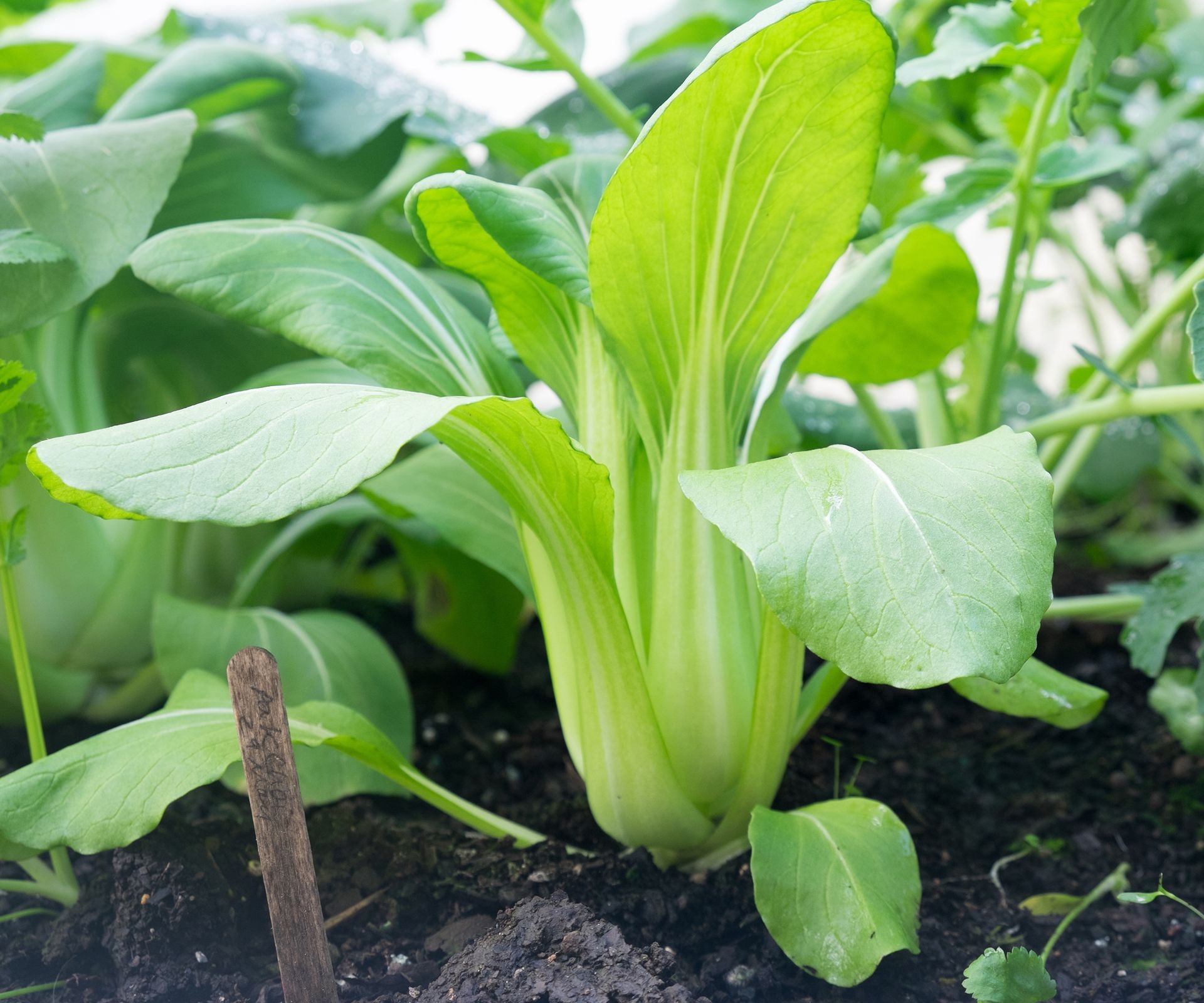 Lush green baby bok choy plants growing closely alongside other vegetables in a garden bed, ideal for intercropping.
Lush green baby bok choy plants growing closely alongside other vegetables in a garden bed, ideal for intercropping.
Bok choy is a relatively heavy feeder, so enrich the soil with ample compost or other organic matter before planting. Sow seeds in the spring after the danger of frost has passed. Plant them ½ inch (13mm) deep and about 3 inches (8cm) apart, with rows spaced approximately 18 inches (46cm) apart if planting in rows. Once seedlings reach about 4 inches (10cm) tall, thin them to 6-9 inches (15-23cm) apart. The thinned seedlings are edible and can be added to salads or stir-fries.
3. Spring Onions & Scallions
Often used interchangeably due to their similar flavor and rapid early spring growth, spring onions and scallions are both excellent Allium options for intercropping. While spring onions develop a small bulb, scallions are primarily grown for their green tops, though both parts are edible for both types. Their quick maturity, shallow root systems, and compact size make them perfect candidates for fitting into tight spaces between other crops.
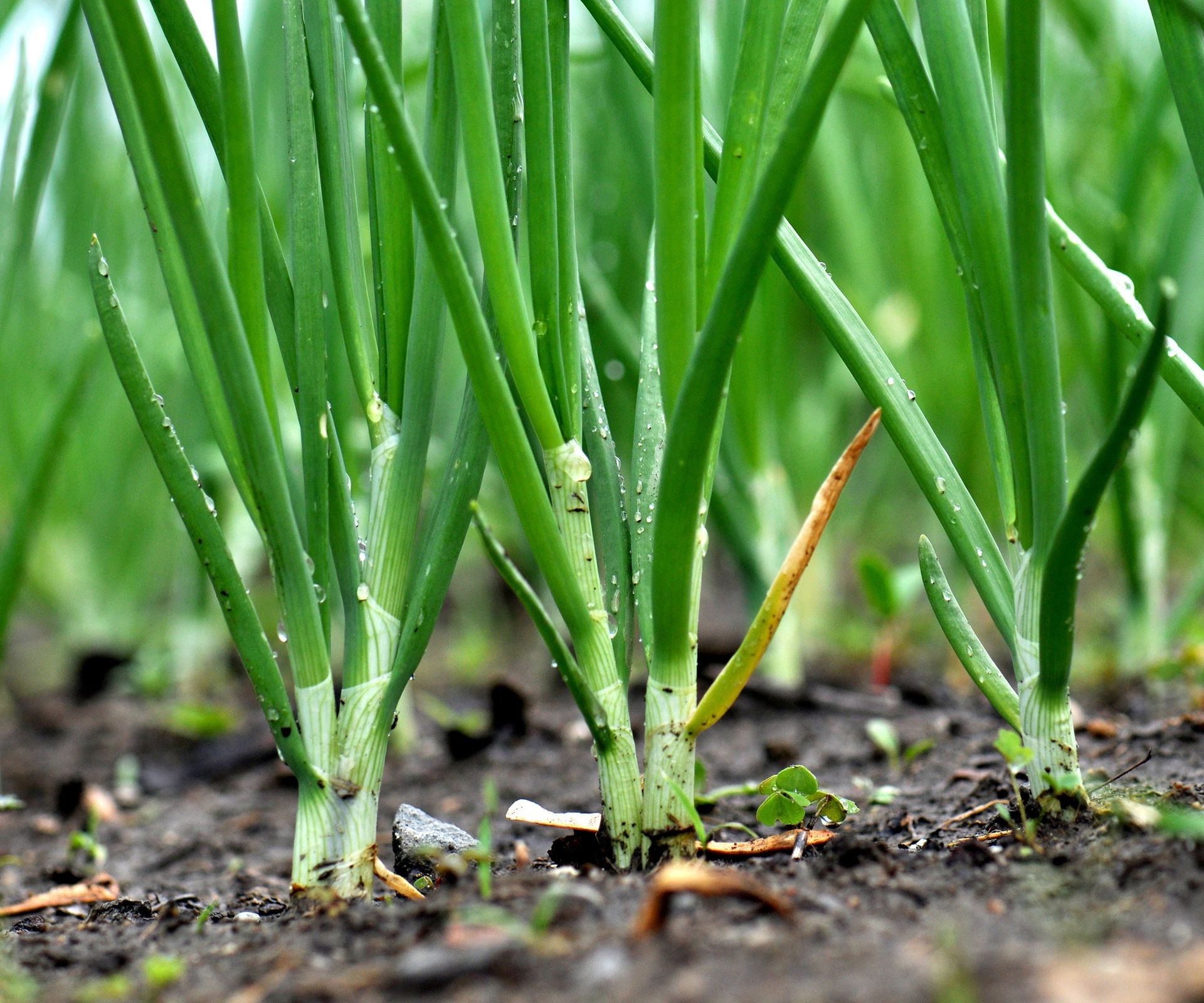 Vibrant green spring onions thriving in a well-maintained vegetable garden, perfect for adding fresh flavor.
Vibrant green spring onions thriving in a well-maintained vegetable garden, perfect for adding fresh flavor.
Ideal soil for these alliums is well-draining, rich in compost or other organic material, and slightly acidic to neutral. If planting spring onions from sets (small bulbs), plant them 6-8 weeks before the last expected frost, spacing them 4-6 inches (10-15cm) apart and 2 inches (5cm) deep. For seeds, sow as soon as the soil can be worked in spring, pressing seeds gently into the soil about 4 inches (10cm) apart. Seed-grown plants are typically ready in 40-50 days, while sets mature faster. Scallions can be started indoors or direct sown in spring when the soil is workable. Sow seeds ¼ inch (6mm) apart and ¼ inch (6mm) deep in fertile, well-draining soil. They’re usually ready in about 50 days. You can harvest them entirely or use the cut-and-come-again method by snipping off just the green tops, allowing them to regrow.
4. Baby Beets
Beets offer another fantastic, quick-growing option for intercropping. While you can let them mature fully, harvesting them as baby beets around 7 weeks after planting provides an early yield and clears space for your main crop. Beets intercrop effectively with Brassicas like cabbage, kale, and broccoli. As a cool-season crop, beets can be planted in spring as soon as the soil is workable. Numerous varieties exist, offering different colors and shapes. Harvesting them young means you don’t need to worry about choosing bolt-resistant varieties.
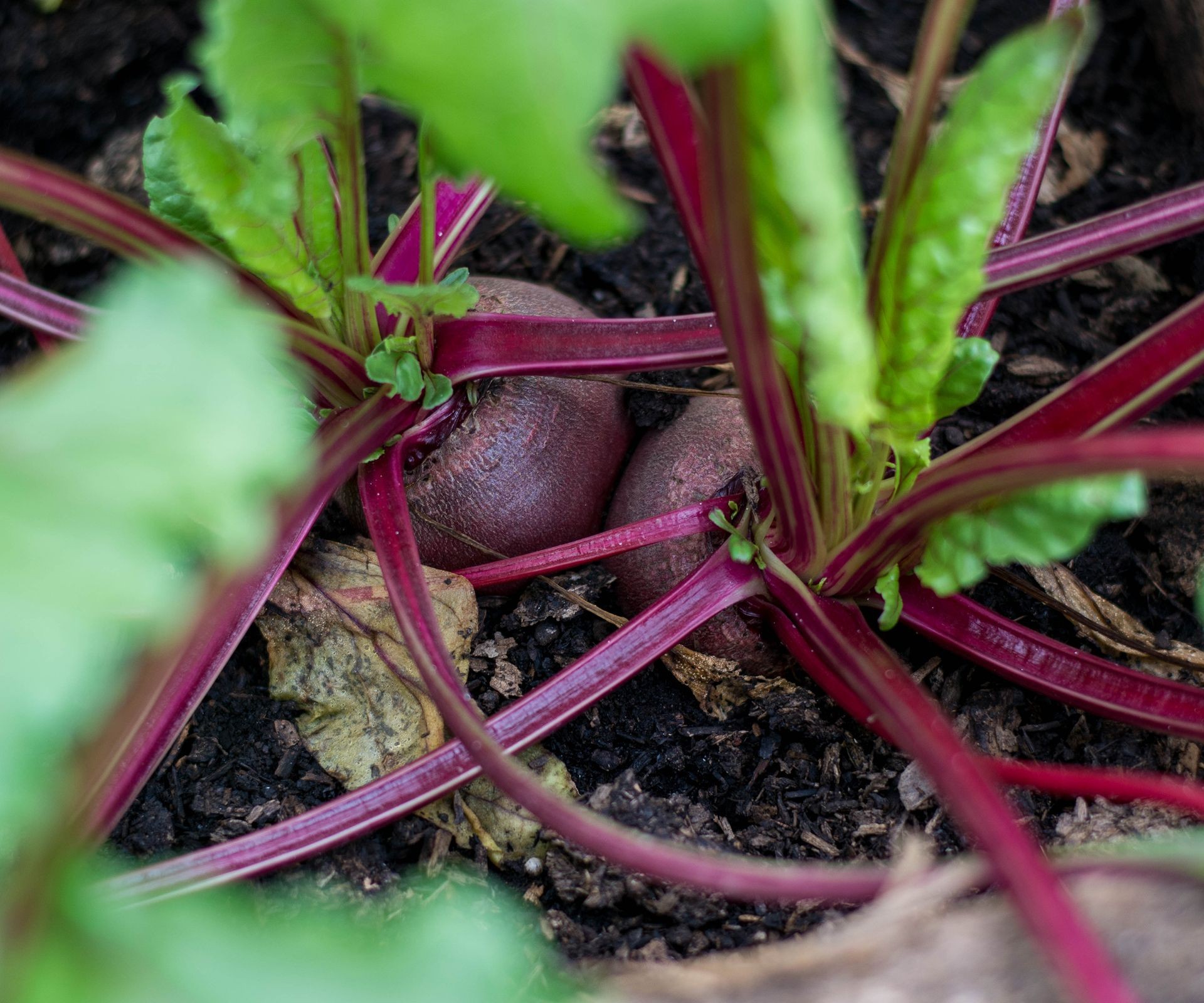 A cluster of young beetroot plants growing in rich soil, showing healthy leaves and developing roots.
A cluster of young beetroot plants growing in rich soil, showing healthy leaves and developing roots.
While beets can tolerate lower fertility, they flourish in well-drained soil amended with plenty of organic matter. Direct sow seeds ½ inch (13mm) deep and 1-2 inches (2.5-5cm) apart. Once plants are 4-5 inches (10-13cm) tall, thin them to 3-4 inches (8-10cm) apart. When harvesting baby beets, avoid pulling on the tops, which can disturb nearby plant roots. Instead, gently loosen the soil or cut the beet off at soil level. Keep the soil consistently moist as beets grow to prevent the roots from cracking.
5. Leafy Greens
Fast-maturing leafy greens like lettuce, arugula, and spinach are stellar intercropping partners, particularly for climbing plants such as peas. Plant these greens around the base of climbers; their leaves will help shade the soil and roots, keeping them cool, while their shallow root systems don’t compete significantly with the deeper roots of the climbers.
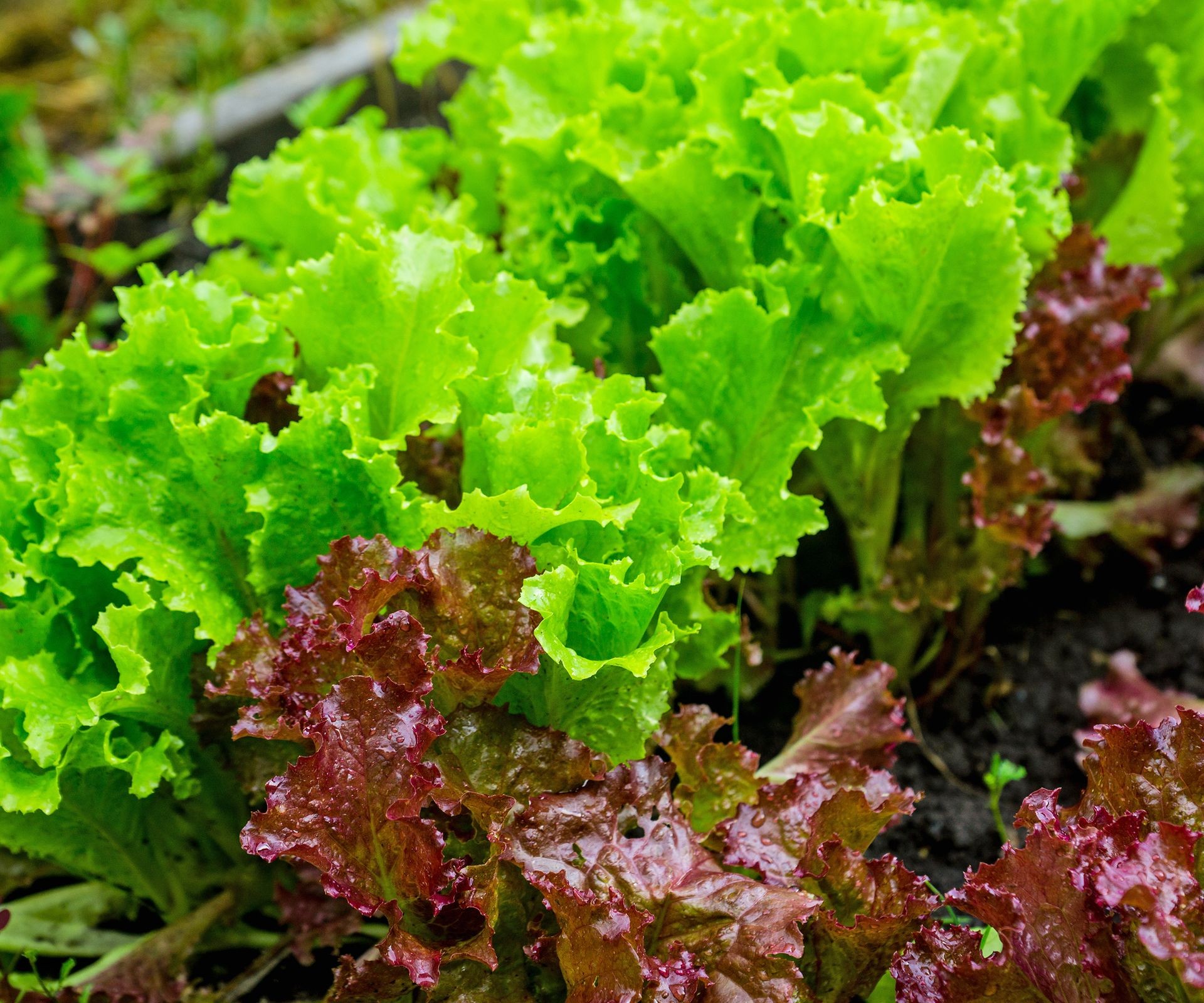 Rows of vibrant green lettuce leaves growing closely together, ready for harvest.
Rows of vibrant green lettuce leaves growing closely together, ready for harvest.
When intercropping leafy greens with climbers, use the cut-and-come-again method to harvest leaves. This allows the greens to continue producing while avoiding disturbing the roots of the main crop. The beauty of leafy greens is the variety available. Sow seeds as soon as soil temperatures are warm enough and frost danger has passed, or get a head start by sowing indoors. Plant them in an area that receives morning sun and some afternoon shade, in well-draining, fertile soil. Spacing varies by type, so check seed packets, but you can plant them closer if harvesting young leaves frequently. As your pea plants finish producing and the greens might be fading in the heat, you can remove the pea vines (cutting them at the base to leave roots for soil health) and plant a second crop like squash or cucumbers to use the trellis, perhaps intercropping those with another round of fast-growing carrots or parsnips. This layering of crops maximizes your growing season brilliantly.
By incorporating these fast-growing vegetables into your garden plan, you can easily implement effective intercropping strategies that boost your overall harvest, improve soil health, and make your garden a more productive and resilient space. Experiment with combinations that work best for your climate and main crops, and enjoy the benefits of earlier, more abundant vegetables!
Ready to explore more ways to enhance your garden’s productivity and health? Discover the range of organic soil amendments, natural fertilizers, and gardening tools available at Biogarden.asia, designed to support every step of your gardening journey.



